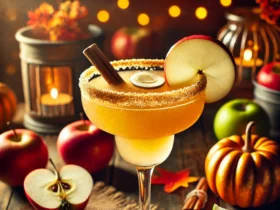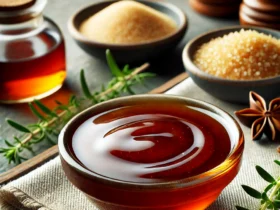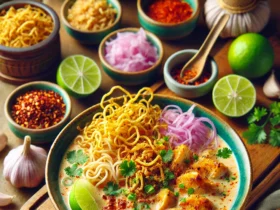Scallions, often referred to as green onions or spring onions, are a staple in many kitchens around the world. Their mild flavor and versatility make them a popular choice for various dishes, from salads to soups. In this comprehensive article, we will delve into everything you need to know about scallions, including their nutritional benefits, culinary uses, and the differences between scallions, green onions, and spring onions. Additionally, we will address frequently asked questions to provide a thorough understanding of this unique ingredient.
What Are Scallions?
Scallions are a type of young onion harvested before the bulb has fully developed. They belong to the Allium family, which includes onions, garlic, leeks, and chives. Scallions are characterized by their long, slender green stalks and small, white bulbs. Both the green tops and white bulbs are edible and are commonly used in cooking for their mild onion flavor.
Nutritional Benefits of Scallions
Scallions are not only flavorful but also packed with essential nutrients. Here are some of the key nutritional benefits:
- Low in Calories: Scallions are low in calories, making them an excellent addition to any diet.
- Rich in Vitamins: They are a good source of vitamins A, C, and K. Vitamin A is important for vision and immune function, while vitamin C is an antioxidant that helps protect the body from free radicals. Vitamin K is essential for blood clotting and bone health.
- High in Fiber: Scallions contain dietary fiber, which aids in digestion and helps maintain a healthy digestive system.
- Antioxidants: They contain antioxidants, such as quercetin and flavonoids, which have anti-inflammatory properties and may reduce the risk of chronic diseases.
Culinary Uses of Scallions
Scallions are incredibly versatile and can be used in a variety of culinary applications. Here are some popular ways to use scallions:
- Salads: Add chopped scallions to salads for a burst of flavor and crunch.
- Soups and Stews: Use scallions as a garnish for soups and stews to enhance the flavor.
- Stir-Fries: Incorporate scallions into stir-fries for a fresh, aromatic touch.
- Dips and Salsas: Mix scallions into dips and salsas for added zest.
- Grilled or Roasted: Grill or roast whole scallions for a delicious side dish.
- Omelettes and Scrambles: Add scallions to omelets or scrambled eggs for a tasty breakfast.
Difference Between Green Onions, Scallions, and Spring Onions
While the terms green onions, scallions, and spring onions are often used interchangeably, there are subtle differences between them:
- Scallions (Green Onions): These are the same and can be used interchangeably. They have a mild flavor and are harvested before the bulb develops. Both the green tops and white bottoms are used in cooking.
- Spring Onions: Spring onions have a slightly more developed bulb compared to scallions and green onions. They are typically harvested in the spring, hence the name. Spring onions have a stronger flavor than scallions and are often used in dishes where a more pronounced onion flavor is desired.
Growing and Harvesting Scallions
Growing scallions is relatively easy, making them a popular choice for home gardeners. Here’s a step-by-step guide on how to grow scallions:
- Choose a Location: Select a sunny spot in your garden with well-draining soil.
- Planting: Plant scallion seeds or sets in early spring, spacing them about 1 inch apart.
- Watering: Keep the soil consistently moist, but not waterlogged.
- Thinning: Thin the plants to about 2 inches apart once they reach a few inches in height.
- Harvesting: Harvest scallions when they reach 8-12 inches tall, typically about 60-80 days after planting.
Storing Scallions
To keep scallions fresh, follow these storage tips:
- Refrigeration: Store scallions in the refrigerator. Wrap them in a damp paper towel and place them in a plastic bag. They will stay fresh for up to a week.
- Freezing: You can also freeze scallions. Chop them and place them in an airtight container or freezer bag. They can be used directly from the freezer in cooked dishes.
Conclusion
Scallions are a delightful addition to any kitchen, offering a mild onion flavor that enhances a variety of dishes. Whether you refer to them as scallions, green onions, or spring onions, understanding their characteristics and uses can elevate your culinary creations. From their nutritional benefits to their versatility in cooking, scallions are a must-have ingredient for both amateur and professional chefs alike. By incorporating scallions into your diet, you can enjoy not only their flavor but also their health benefits. So, the next time you’re at the grocery store, be sure to pick up some scallions and experiment with new recipes to delight your taste buds.
FAQs about Scallions
Q1: Are scallions and green onions the same?
A1: Yes, scallions and green onions are the same and can be used interchangeably in recipes.
Q2: Can I use the green tops of scallions?
A2: Absolutely! Both the green tops and white bulbs of scallions are edible and can be used in cooking.
Q3: How do scallions differ from chives?
A3: Scallions have a mild onion flavor, while chives have a more delicate, grassy flavor. Chives are also smaller and thinner than scallions.
Q4: Can I regrow scallions from the roots?
A4: Yes, you can regrow scallions from the roots. Place the white root ends in a glass of water, and they will start to grow new green shoots.
Q5: Are scallions good for you?
A5: Yes, scallions are nutritious and low in calories. They are rich in vitamins A, C, and K, and contain antioxidants and dietary fiber.
Q6: Can scallions be eaten raw?
A6: Yes, scallions can be eaten raw and are often used in salads, salsas, and as a garnish.
Q7: How do I know if scallions have gone bad?
A7: If scallions become slimy, have a strong odor, or develop mold, they have gone bad and should be discarded.
Q8: What dishes can I make with scallions?
A8: Scallions are versatile and can be used in salads, soups, stir-fries, dips, omelets, and more.
Q9: Can I substitute scallions with other onions?
A9: Yes, you can substitute scallions with other onions, but keep in mind that the flavor may be stronger. Adjust the amount accordingly.
Q10: Are scallions available year-round?
A10: Scallions are generally available year-round in grocery stores.







Leave a Reply